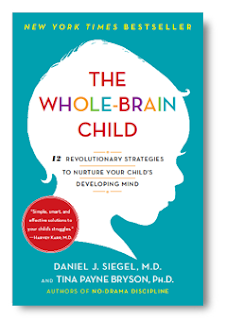One of my biggest challenges is always trying to figure out how to keep a child’s personality vibrant while helping them regulate to be an active learner. So for this student, who by all accounts should be on a behavior chart with all the distracting and sometimes unsafe behaviors I see in class, I’ve decided not to do a behavior chart and try something new.
Whenever I was brainstorming what would be the best fit chart for him, I kept feeling stuck. When we got back from winter break and I started seeing these behaviors again I started realizing that I’m stuck because this student doesn’t need reminders throughout the day about what’s expected and unexpected in school, he knows. He needs more direct instruction, practice regulating his emotions, practice listening to what his body needs to help him be actively participating each day.
I realized that he was already showing me what he needed – to move! When he is trying to wrestle with a friend, he needs physical touch and pressure. When he is rolling on carpet, he needs to get up and move his body around. So, on the first Friday back from break I pulled him aside and asked him what some body movements were that he thinks could help his body feel regulated.
After we came up with a list, we came up with a plan.
I can take a movement break every 15 minutes to help me stay in Green Zone.
I will do at least one movement 5 times before returning to my work.
Every 15 minutes, he will get up from what he is doing and make a movement choice. Instead of waiting until it’s obvious he needs these breaks, we are trying to catch the behaviors before they get too big to regulate.
When he picks a movement choice he will do it 5 times before moving on. He may come back to his work after one choice or he may need to make another choice if he doesn’t feel ready. The first time we tried this, he did all six movements 5 times before returning to his seat. The second time, he only chose one of the movements 5 times before joining us again.

In an effort to minimize the amount of times I need to say his name followed by a direction, we hung his menu on the back side of his table’s name tags (we don’t have name tags on desks, they hang in a protective sheet at the front of each table). The plan is for me to walk by and flip the name tag over, showing the menu. This is his way of seeing that it’s time to take a proactive movement break. We decided that he might recognize he needs the break before I’ve flipped the menu, in which case he can flip the menu himself. This way I can check his table first to see if he has chosen a regulation strategy when I see him looking off task.
At this point, I have no data to see if it has minimized his distracting behaviors during class time. But I do have high hopes for it because he followed through on it all the first day and he has already been choosing the amount of activities he needs at any given moment. Most of all, this has given us something to focus our conversations around in a more specific way while I keep working on teaching him why this is supposed to help. Ultimately, I don’t want him to rely on me telling him when and what he needs, I want him to recognize it himself and be able to tell me when he needs a b reak.
reak.
Although, these are strategies I offer the entire first grade class for any time they need a quick break to regulate themselves, having it typed up and made into a proactive plan for a student like mine will hopefully make a big difference. I’m hoping his and my cooperative planning and learning (combined with my excitement for this idea) translates into a positive change for this kid!
Let me know how you organize your movement breaks in the classroom or at home for individual kids so they are minimally disruptive to others!


